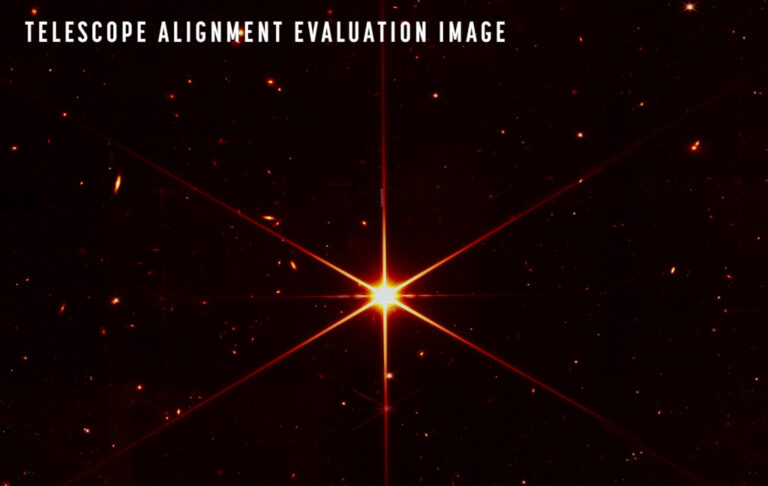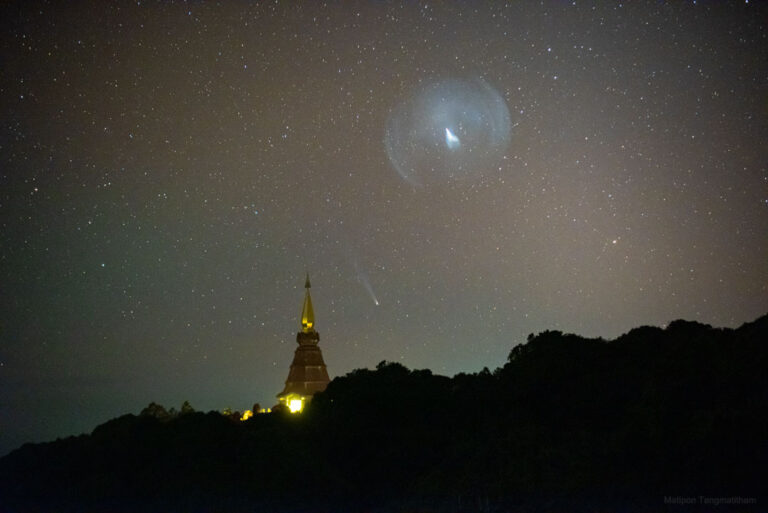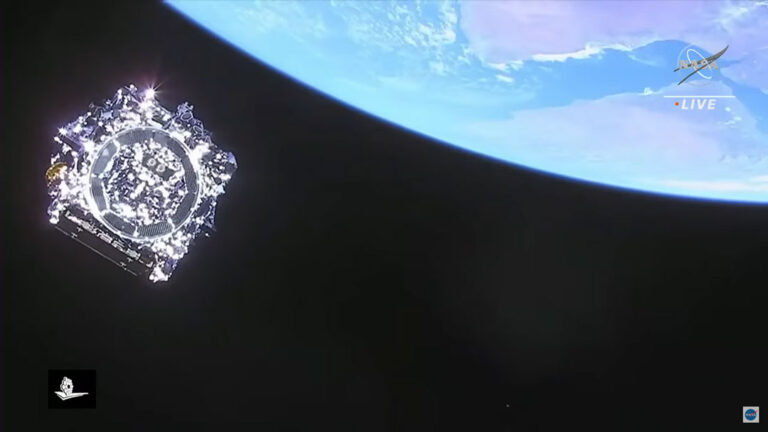韦伯: 木星与木星环的红外光图像
2022年7月20日 Jupiter and Ring in Infrared from Webb Image Credit: NASA, ESA, CSA, STScI; Processing & License: Judy Schmidt Explanation: Why does Jupiter have rings? Jupiter’s main ring was discovered in 1979 by NASA’s passing Voyager 1 spacecraft, but its origin was then a mystery. Data from NASA’s Galileo spacecraft that orbited Jupiter from 1995 to 2003, however, confirmed the hypothesis that this ring was created by meteoroid impacts on small nearby moons. As a small meteoroid strikes tiny Metis, for example, it will bore into the moon, vaporize, and explode dirt and dust off into a Jovian orbit. The featured image of Jupiter in infrared light by the James Webb Space Telescope shows not only Jupiter and its clouds, but this ring as well….






